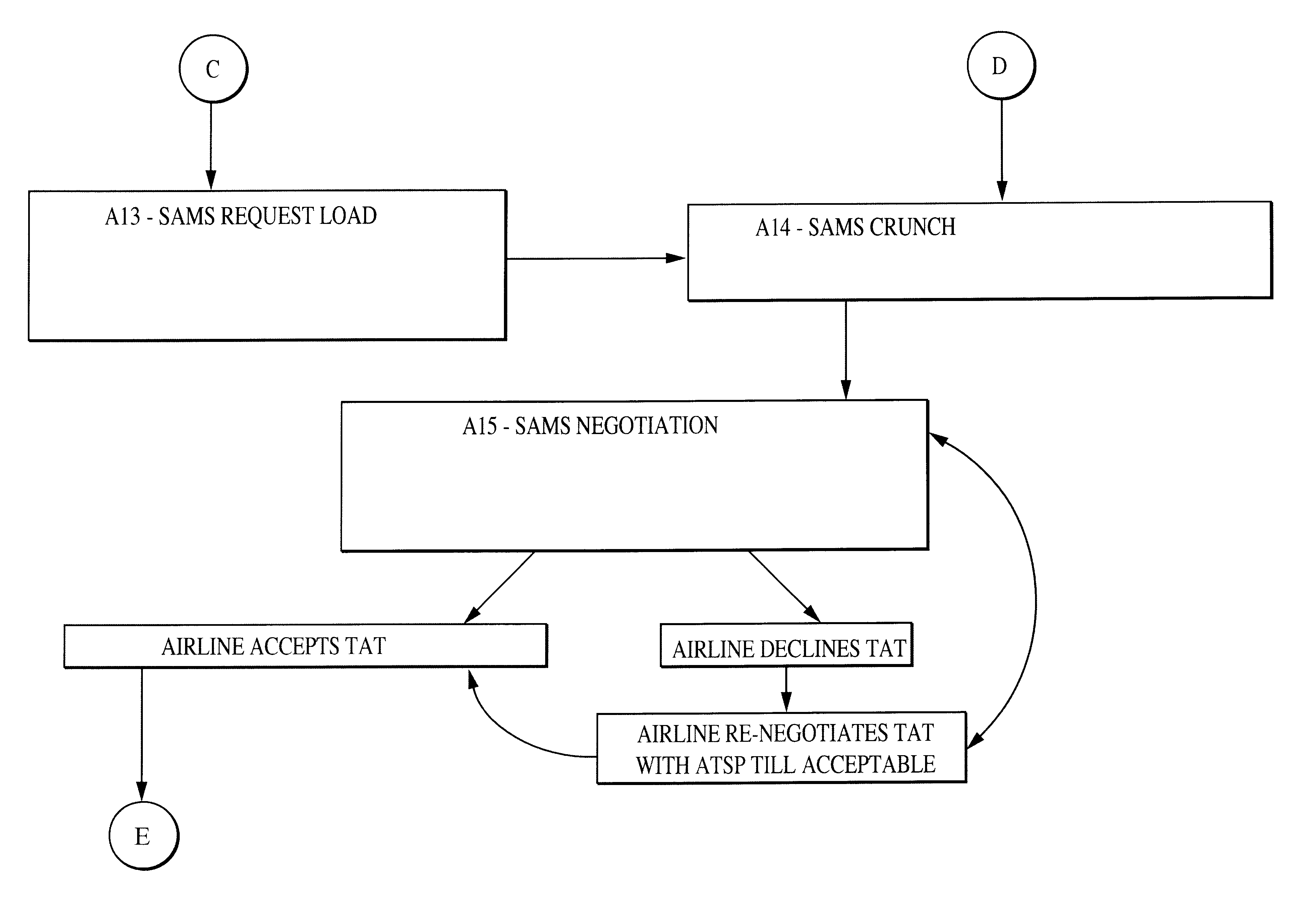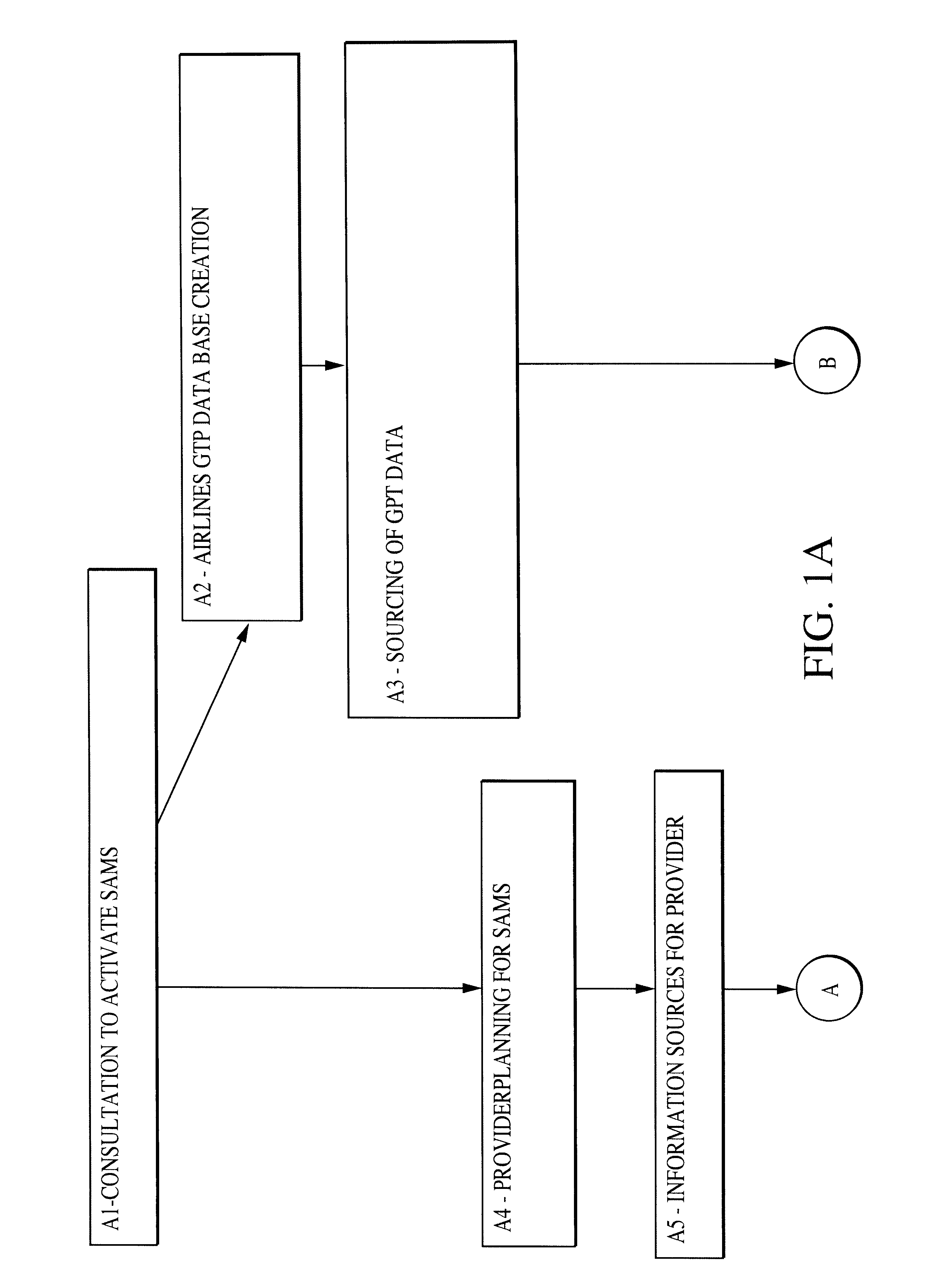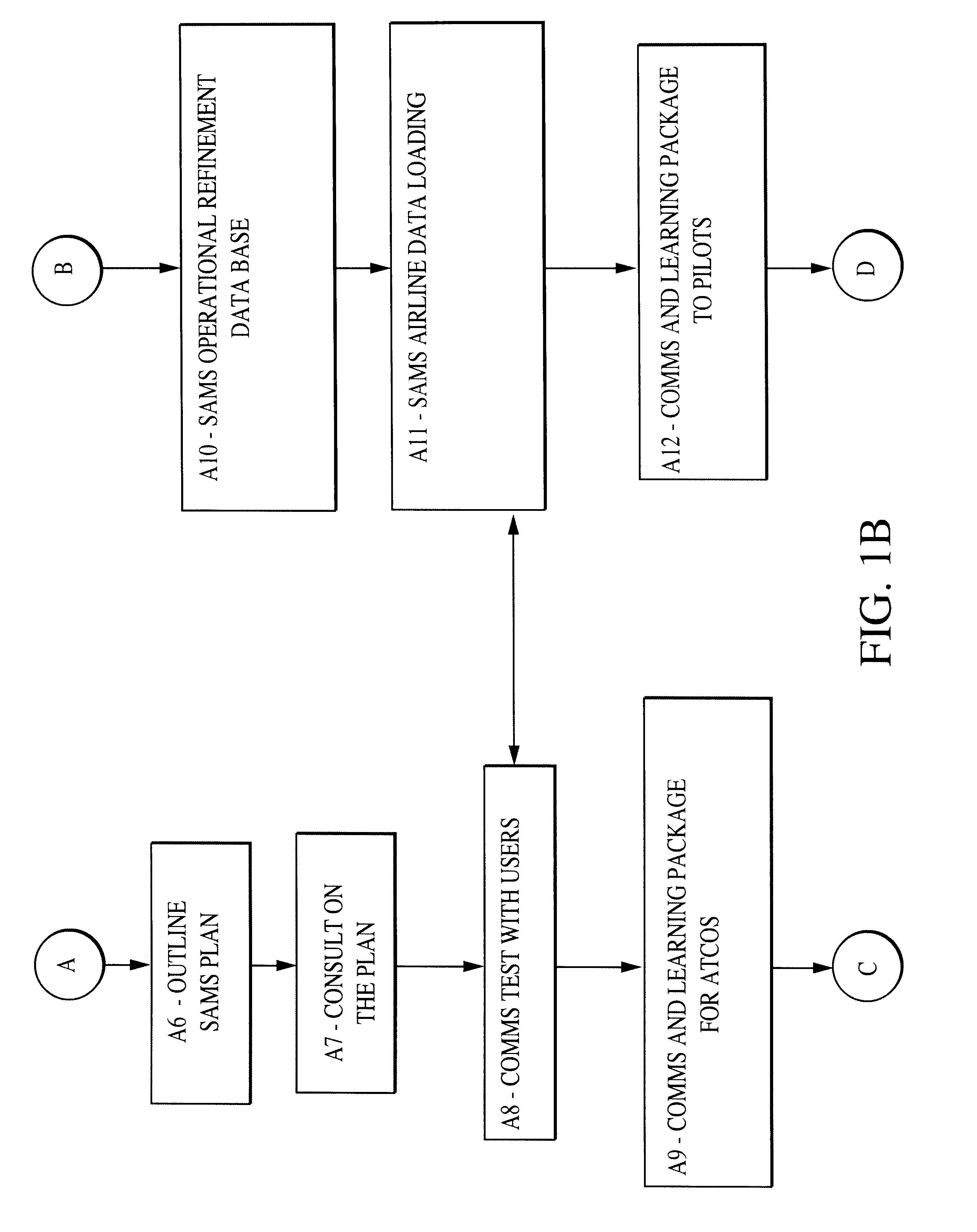Schedule activated management system for optimizing aircraft arrivals at congested airports
a management system and flight technology, applied in the field of aircraft control, can solve the problems of inability to solve the problem of adding additional runways, the arrival process at congested airfields is inefficient for both atc agencies and airlines, and the slot will still not have a direct connection
- Summary
- Abstract
- Description
- Claims
- Application Information
AI Technical Summary
Benefits of technology
Problems solved by technology
Method used
Image
Examples
Embodiment Construction
The following glossary will be used in describing the invention:
Referring now to the drawings, and more particularly to FIGS. 1A through 1F, there is shown an overall flow chart of steps A1 through A30 for a best mode of implementing the invention. Preliminarily, (A1) an ANSP in Consultation with users decides that an airfield should become SAMS compliant, or Users request that the airfield become SAMS compliant. (A2) Airline ("users") establishes databases to determine GPTs to be applied to each flight number. The GPT is the addition of two airline derived elements of time, one related to airline punctuality the other to taxi time for expected runway in use. As noted in block (A3), punctuality can be derived from any data source such as ACARS, company estimates, historical airport or ATC data or company targets. Taxi time will normally be derived from a similar data source or could be averaged information. Orientation of projected departure runway will be assessed from either meteo...
PUM
 Login to View More
Login to View More Abstract
Description
Claims
Application Information
 Login to View More
Login to View More - R&D
- Intellectual Property
- Life Sciences
- Materials
- Tech Scout
- Unparalleled Data Quality
- Higher Quality Content
- 60% Fewer Hallucinations
Browse by: Latest US Patents, China's latest patents, Technical Efficacy Thesaurus, Application Domain, Technology Topic, Popular Technical Reports.
© 2025 PatSnap. All rights reserved.Legal|Privacy policy|Modern Slavery Act Transparency Statement|Sitemap|About US| Contact US: help@patsnap.com



